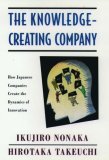Oxygen Software Development is off to Agile 2007. Four of us are speaking:
Ript™: Innovation and Collective Product Ownership
by Ken H. Judy and Ilio Krumins-Beens
XR11: Product Ownership
Thursday, 4:00pm
In 2006, Oxygen Media CEO Geraldine (Gerry) Laybourne, the woman largely responsible for Nickelodeon’s early success, partnered with her XP/Scrum development team to create a new mission and new revenue stream for her company. This experience report covers product conception through initial release of a single product. It describes how Gerry’s leadership qualities paired with agile practices to engender deep mutual trust and collective ownership over technical execution and business outcome. This unbounded collaboration provides a template for future projects at Oxygen and other organizations with innovation as part of their agile product development strategy.
The Gentle Art of Pair Programming
Oksana Udovitska and Wendy Friedlander
Wednesday, 8:30am
The presenters build upon their experience as software professionals and the pair programming practices employed at Oxygen Media, the first and only cable Network owned and operated by women, to teach The Gentle Art of Pair Programming. This tutorial will cover the basic principles of pair programming, why it is a worthwhile practice and how to get started. Discussion will include how to take full advantage of pairing and how to cope with its challenges. For those new to pair programming, this will serve as a good introduction and include concrete first steps. For those already in a pairing environment, this presentation will include new viewpoints and interesting discussions on familiar topics. Additionally, everyone will benefit from the interactive and fun games for improving and enhancing communication skills. Being women in a male dominated profession gives the presenters unique perspectives and insights into pairing which they are eager to share in passionate and exciting ways.

 We are currently working on a consumer software product named
We are currently working on a consumer software product named 